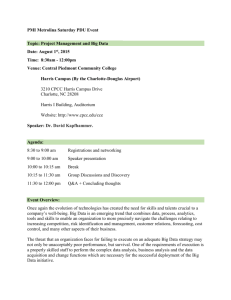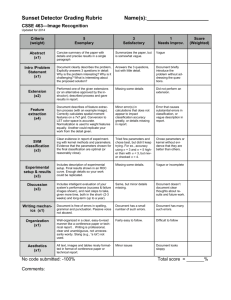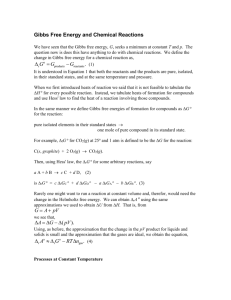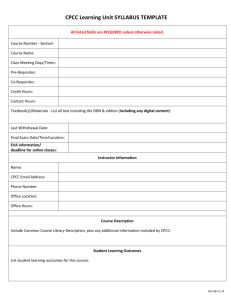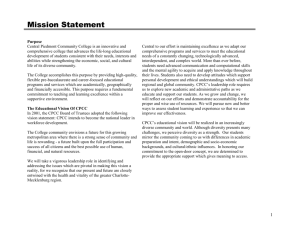Appendix A.4: Bayesian Model Used to Find the Latent Construct
advertisement
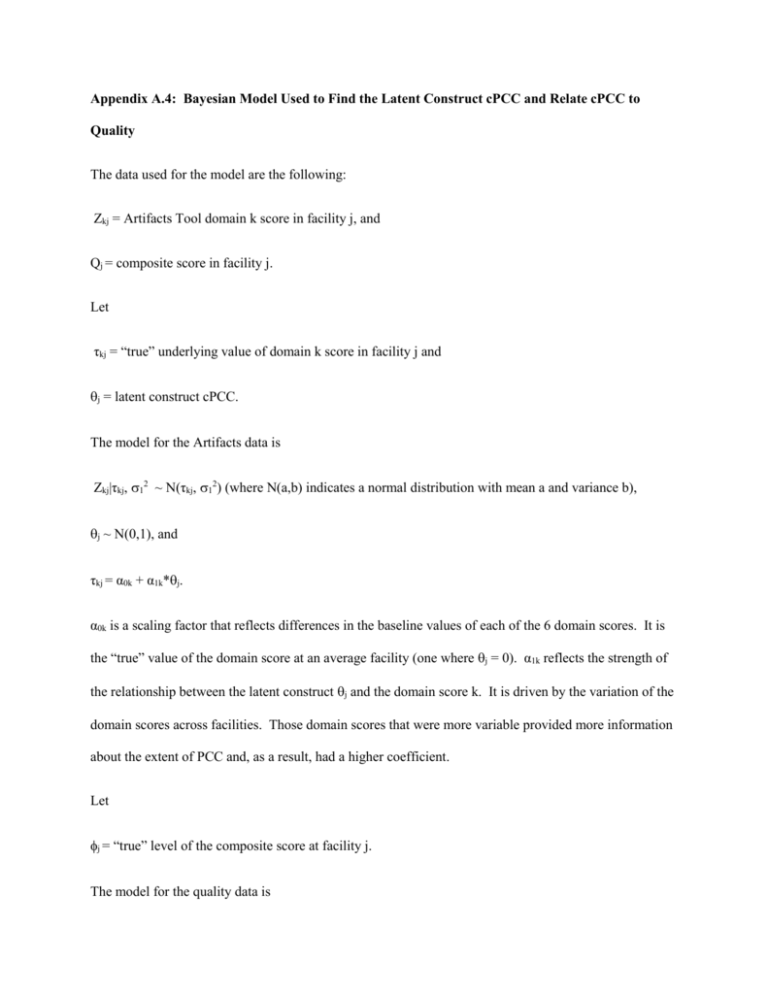
Appendix A.4: Bayesian Model Used to Find the Latent Construct cPCC and Relate cPCC to Quality The data used for the model are the following: Zkj = Artifacts Tool domain k score in facility j, and Qj = composite score in facility j. Let τkj = “true” underlying value of domain k score in facility j and j = latent construct cPCC. The model for the Artifacts data is Zkj|τkj, 12 ~ N(τkj, 12) (where N(a,b) indicates a normal distribution with mean a and variance b), j ~ N(0,1), and τkj = α0k + α1k*j. α0k is a scaling factor that reflects differences in the baseline values of each of the 6 domain scores. It is the “true” value of the domain score at an average facility (one where j = 0). α1k reflects the strength of the relationship between the latent construct j and the domain score k. It is driven by the variation of the domain scores across facilities. Those domain scores that were more variable provided more information about the extent of PCC and, as a result, had a higher coefficient. Let j = “true” level of the composite score at facility j. The model for the quality data is Qj ~ N(j, 2j2) and j = 0 + 1*j. We place vague priors on the α’s and ’s, N(0,100), and 1, uniform(0,10). The number of long-stay patients differs across facilities and, as a result, variation in Qj differs. We take this into account by assuming 2j = δ0 + δ1*(1/√nj), where nj is the average denominator for the QIs at facility j (i.e., the average of nijs. We place vague priors on δ0 and δ1. To estimate model parameters, we use Gibbs sampling as implemented in WinBUGs 20. This Markov Chain Monte Carlo estimation method generates samples of model parameters from the posterior distribution of the parameters, given data and prior distributions of the parameters. Since we place vague priors on the parameters, the posterior distributions are driven by the data. We use the mean of the values from the Gibbs samples (after the burn-in period) as the point estimate of parameters. We also report the intervals within which we are 95% certain the value of the parameter lies (technically these are called 95% credible intervals). Finally, for some of the key parameters, we report the probability the parameter is positive (i.e., the percentage of the Gibbs samples in which the parameter estimate is positive).



